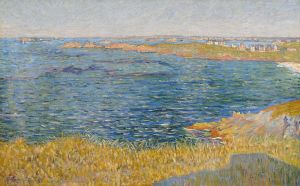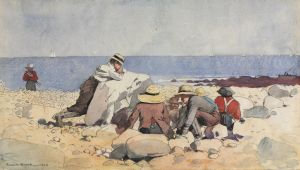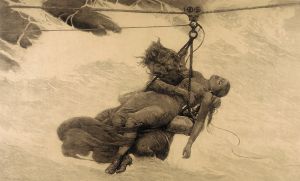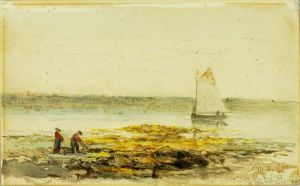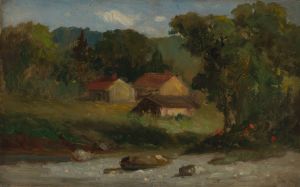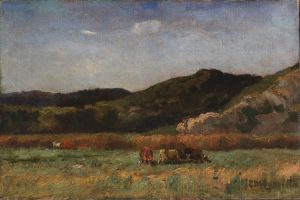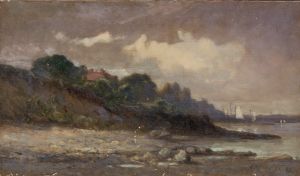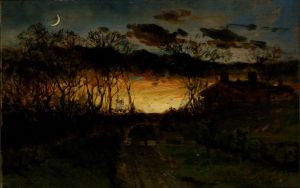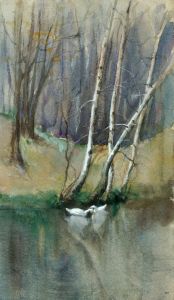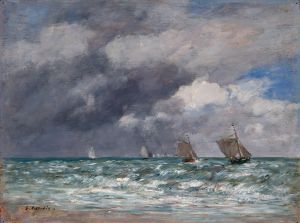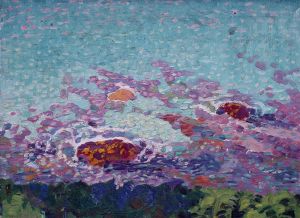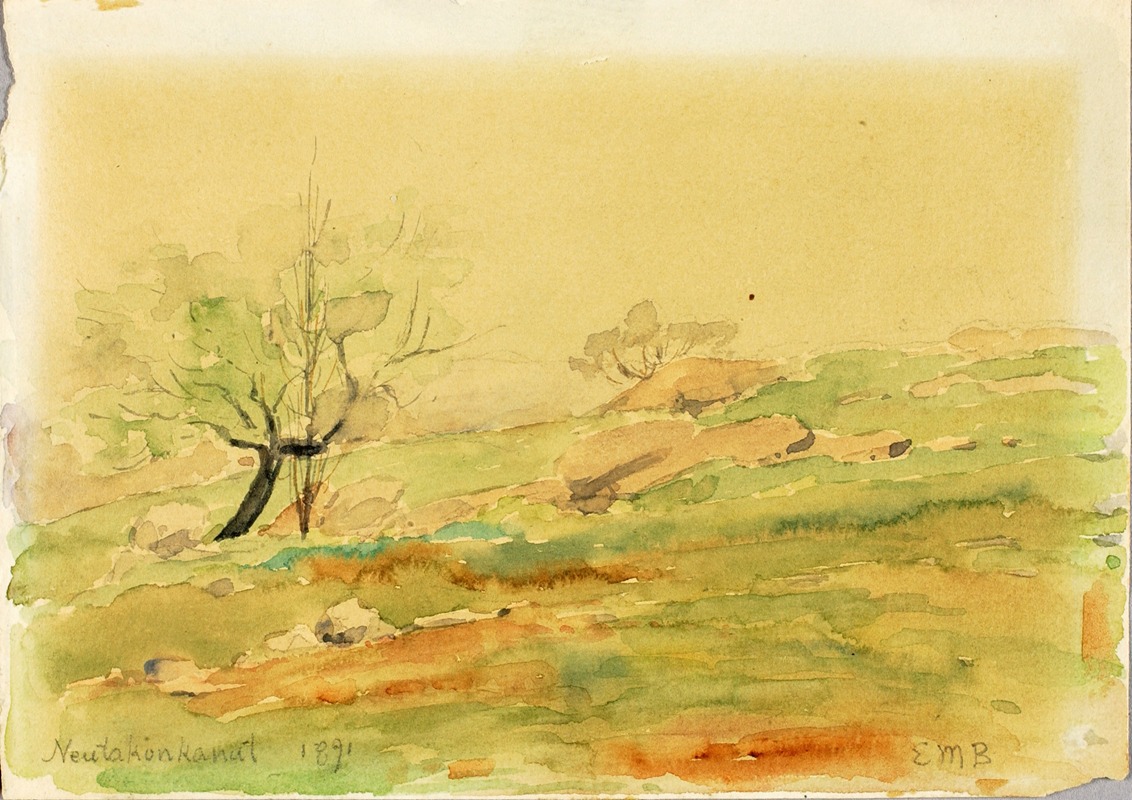
Neutakonkanut
A hand-painted replica of Edward Mitchell Bannister’s masterpiece Neutakonkanut, meticulously crafted by professional artists to capture the true essence of the original. Each piece is created with museum-quality canvas and rare mineral pigments, carefully painted by experienced artists with delicate brushstrokes and rich, layered colors to perfectly recreate the texture of the original artwork. Unlike machine-printed reproductions, this hand-painted version brings the painting to life, infused with the artist’s emotions and skill in every stroke. Whether for personal collection or home decoration, it instantly elevates the artistic atmosphere of any space.
Edward Mitchell Bannister was a prominent African American artist in the 19th century, known for his contributions to the American landscape painting tradition. Born in 1828 in Saint Andrews, New Brunswick, Canada, Bannister moved to Boston in the 1840s, where he began his artistic career. He later settled in Providence, Rhode Island, where he became an integral part of the local art community.
One of Bannister's notable works is "Neutakonkanut," a painting that reflects his deep appreciation for the natural world and his skill in capturing the serene beauty of the American landscape. The title "Neutakonkanut" refers to Neutaconkanut Hill, a prominent natural feature located in Providence, Rhode Island. This area was significant not only for its natural beauty but also for its cultural and historical importance to the local Indigenous peoples.
Bannister's work is characterized by his use of soft, atmospheric effects and a keen attention to detail, which are evident in "Neutakonkanut." His style was influenced by the Barbizon School, a group of French painters who emphasized naturalism and the depiction of rural scenes. Bannister's landscapes often feature a harmonious blend of light and shadow, creating a tranquil and contemplative mood.
"Neutakonkanut" exemplifies Bannister's ability to convey the subtleties of light and atmosphere. The painting likely depicts a scene from Neutaconkanut Hill, capturing the lush greenery and the gentle undulations of the landscape. Bannister's brushwork is delicate and precise, allowing him to render the textures of foliage and the play of light across the terrain with remarkable fidelity.
Throughout his career, Bannister faced significant racial barriers, yet he persevered and gained recognition for his artistic talents. In 1876, he achieved national acclaim when his painting "Under the Oaks" won a first-prize medal at the Philadelphia Centennial Exposition. This recognition was a significant milestone, as it was rare for African American artists to receive such honors during that period.
Bannister was a founding member of the Providence Art Club in 1880, which became a vital institution for artists in the region. His involvement in the club underscored his commitment to fostering a vibrant artistic community in Providence.
Edward Mitchell Bannister's legacy is marked by his dedication to his craft and his ability to transcend the racial prejudices of his time through his art. "Neutakonkanut" stands as a testament to his skill as a landscape painter and his deep connection to the natural world. Today, Bannister's works are celebrated for their beauty and historical significance, and they continue to inspire and resonate with audiences.





